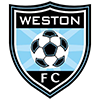[U18] Sports Medicine

U18 Sports Medicine was developed to meet the needs of the pediatric and adolescent population for sports injuries and prevention. Our team specializes in treating young athletes, starting with our fellowship trained pediatric orthopedic surgeons from the Orthopedic Center at Joe DiMaggio Children’s Hospital: Dr. Michael Jofe, Dr. Randolph Cohen, Dr. Neal McNerney, Dr. Stephen Storer, Dr. Jeremy Frank, Dr. Eric Eisner and Dr. Andrew Gupta.
In addition to our pediatric orthopedic surgeons, Dr. Matthew Fazekas and Dr. Michael Dressing are board-certified pediatricians with fellowship training and board certification in pediatric, adolescent and young adult sports medicine. They also serve as the sports medicine specialists for the Joe DiMaggio Children’s Hospitals Concussion Clinic.
From diagnostic imaging by our pediatric radiologists and technologists to anesthesia care by our board-certified pediatric anesthesiologists and rehabilitation by our orthopedic/sports certified physical therapists, your young athlete will be cared for by professionals who specialize in treating children and adolescents.
We extend our services to the community by providing licensed Athletic Trainers in area high schools, youth sports tournaments and injury prevention presentations to coaches, parents and other interested community members.
To request an appointment with a pediatric orthopedic, sports concussion specialists or sports medicine physician please click here or contact us at (954) 265-6300.
To request general information on our [U18] Sports Medicine program please email Gabe Casanova at [javascript protected email address]
To request general information on our [U18] Performing Arts and Dance Medicine program please email us at [javascript protected email address]
To request information on our Athletic Training services please email Gabe Casanova at [javascript protected email address]
For information on the JDCH Concussion Clinic please click www.JDCH.com/Concussion
For information on our sports therapy programs in Coral Springs, Miramar and Wellington please click
Common Body Injuries
Head
Concussion, also known as minor traumatic brain injury is the sudden and temporary loss or disturbance in nerve cell function of the brain that occurs as a result of a blow or an injury to the head. It is common among school children between the age of 8 and 13 who are involved in playing sports such as football, ice hockey, snow skiing, and bicycling.
Clavicle
The clavicle is the bone that connects your sternum or breastbone to your shoulder. Clavicle fracture, also called broken collarbone is a very common sports injury seen in people who are involved in contact sports such as football and martial arts as well as impact sports such as motor racing.
Shoulder
Elbow
Wrist
Hand
- Fractures of the Hand and Fingers
- Trigger Finger
- Dupuytren’s Contracture
- De Quervain’s Tenosynovitis
- Carpal Tunnel Syndrome
- Treatment of Dupuytren’s contracture with Xiaflex
- Flexor Tendon Injuries
- Mallet Finger
- Finger & Thumb Sprain
- Thumb Fracture
- Boutonnière Deformity
- Thumb Arthritis
- Finger Fractures
- Finger Dislocations
- Finger & Thumb Sprains
- Gamekeeper’s Thumb
- Mallet Finger
- Boxer’s Fracture
Lower Back
Hip
Knee
Injury Prevention
As a young athlete your focus should be on preventing injuries. This section provides extensive information on how to prevent common athletic injuries. Simple warm-up stretching can minimize the risk of injuries from tennis elbow to leg, back and knee injuries.
Many sports injuries from concussions, groin strain, neck strain and wrist sprain to hamstring or ankle sprain can be prevented with the right protective gear. U18 Sports Medicine is your resource whether you need a knee doctor, bone doctor or info on how to get better results from rehab and fitness training.
Head
Concussions:
- Use helmets during contact sports and while riding bicycles, skiing, or riding a horse
- Use proper tackling technique
Second Impact Syndrome:
- Do not return to competition until all neurological symptoms have resolved and you have been cleared by a physician.
Neck
Neck Strains:
- Perform neck strengthening exercises
- Neck strengthening exercises including upper trapezius work
- Avoid sleeping on stomach
- Use football collar
- Use proper tackling techniques
Neck Spasms:
- Postural awareness
- 2 to 1 back to chest ratio when working out
- Regular stretching
- Stress management
- Use supportive pillow
- Avoid sleeping on stomach
Stinger/ Burner:
- Use of football collar, soft neck roll or cowboy collar
- Shoulder pads must fit properly
- Maintain neck flexibility
- Strengthen neck muscles
- Use proper form during tackling, avoid “spearing” techniques
Shoulder
Rotator Cuff Tendonitis:
- Maintain a strong rotator cuff
- For throwers, cuff exercises should be performed about 2 to 3 times a week
- Maintain a flexible rotator cuff, shoulder, and chest area
- Maintain good posture and perform postural exercises
- Maintain a 2 to 1 back to chest ratio when working out
- Little League pitchers should follow recommended pitch counts
- Pitcher should take an “off season” to allow the shoulder to rest, and recover
- Have throwing mechanics evaluated by a qualified instructor
- Ice shoulder after heavy, repetitive activities like pitching
- Make sure equipment is properly fitted for the athlete (e.g. tennis racquet grip size)
Biceps Tendonitis:
- Maintain good posture and perform postural exercises
- Maintain a 2 to 1 back to chest ratio when working out
- For throwing athletes it is not recommended to bench with a straight bar
- Ice shoulder after heavy activity
Shoulder Contusion:
- Use proper tackling techniques
- Use proper equipment like shoulder pads
Little League Shoulder:
- Follow recommended guidelines for appropriate pitch count (depends on age)
- Allow for adequate rest time between pitching events
- Ice the shoulder after training or games
- Playing through pain and ignoring initial signs of injury could lead to further damage
Shoulder Instability:
- Maintain good posture and perform postural exercises
- Maintain a 2 to 1 back to chest ratio when working out
- For throwing athletes it is not recommended to bench with a straight bar
- Ice shoulder after heavy activity
Back
Back Spondylolysis:
- Maintain good strengthen of lower back and abdominal muscles
- Maintain good core stability and good body awareness/coordination
- Maintain good posture and avoid slouching
- Emphasize full hamstring flexibility
- Educate yourself on proper weight training techniques
- Perform training activities on soft cushiony surfaces like grass
Spondylolisthesis:
- Maintain good strength of lower back and abdominal muscles
- Maintain good core stability and good body awareness/coordination
- Maintain good posture and avoid slouching
- Emphasize full hamstring flexibility
- Educate yourself on proper weight training techniques
- Perform training activities on soft, cushiony surfaces like grass
Disc Herniation:
- Maintain good strength of lower back and abdominal muscles
- Maintain good core stability and good body awareness/coordination
- Maintain good posture and avoid slouching
- Emphasize full hamstring flexibility, as long as it does not exacerbate radiating pain nerve symptoms
- Educate yourself on proper weight training body mechanics and lifting techniques
- Perform training activities on soft cushiony surfaces like grass
- Avoid holding your breath when lifting
- Avoid carrying excess body weight
Scheuermann’s Disease:
- Maintain good strength of lower back and abdominal muscles
- Maintain good core stability and good body awareness/coordination
- Maintain good posture and avoid slouching
- Emphasize full hamstring flexibility
- Educate yourself on proper weight training techniques
- Perform training activities on soft cushiony surfaces like grass
Scoliosis:
- Maintain good strength of lower back and abdominal muscles
- Maintain good core stability and good body awareness/coordination
- Maintain good posture and avoid slouching
- Emphasize full hamstring flexibility
- Educate yourself on proper weight training techniques
- Perform training activities on soft cushiony surfaces like grass
Elbow
Little League Elbow:
- Avoid same sort year round participation
- Maintain appropriate pitching count
- Avoid curve balls and sliders until the body is mature
- Maintain good shoulder strength and flexibility
- Take an off-season of at least one month
- Review pitching mechanics with a qualified professional
- Maintain good lower body strength and flexibility
- Ice elbow after heavy activity
Tennis Elbow:
- Maintain good strength and flexibility of shoulder and forearm
- Avoid repetitive movements with same arm and alternate arm when possible
- Ice elbow after heavy activity
Triceps Tendonitis:
- Avoid overuse activities
- Avoid forceful snapping movements of the elbow
- Maintain good strength of the triceps region
Elbow OCD:
- Avoid overuse loading of the elbow such as repeated vault in gymnastics
- Monitor for signs and symptoms and seek attention of an orthopedic surgeon if persistent pain develops
Hand
Wrist Sprain:
- Wear wrist guards when possible
- If unable to wear wrist guards use tape to prevent hyper extension of wrist
- Enhance coordination to minimize the chance of falls
Scaphoid Fracture:
- Wear wrist guards when possible
- If unable to wear wrist guards use tape to prevent hyper extension of wrist
- Enhance coordination to minimize the chance of falls
Colles Fracture:
- Wear wrist guards when possible
- If unable to wear wrist guards use tape to prevent hyper extension of wrist
- Enhance coordination to minimize the chance of falls
Gymnast Wrist (distal radial epiphysitis):
- Use softer or more supportive mat surfaces for tumbling, especially when learning new skills
- Use of wrist supports and taping can help to minimize hyperextension of the wrist
- Strengthening the forearm and wrist may help to improve force absorption during impact activities
Hip
Hip Pointer:
- Wear proper padding over the Iliac Crest
Hip Flexor Strain:
- Maintain good flexibility of calves, quadriceps, hip flexors and abdominals musculature
- Perform a well-rounded dynamic warm up prior to activity
- Perform static stretching after activity
- Maintain good strength of lower body musculature
- Train in multiple planes and load the muscles in a sport specific matter
- Increase general endurance as the chance of injury increases when training results in muscle fatigue
- Maintain equal bilateral strength to avoid compensations
- Increase core strength
Hamstring Strain:
- Maintain good flexibility of lower body musculature
- Perform a well-rounded dynamic warm up prior to activity
- Perform static stretching after activity
- Maintain good strength of lower body musculature
- Train in multiple planes and load the muscles in a sport specific matter
- Increase general endurance as the chance of injury increases when training results in muscle fatigue
- Maintain equal bilateral strength to avoid compensations
- Increase core strength
Groin Strain:
- Maintain good flexibility of lower body musculature
- Perform a well-rounded, dynamic warm up prior to activity
- Perform static stretching after activity
- Maintain good strength of lower body musculature
- Train in multiple planes and load the muscles in a sport specific matter
- Increase general endurance as the chance of injury increases when training results in muscle fatigue
- Maintain equal bilateral strength to avoid compensations
- Increase core strength
Snapping Hip Syndrome:
- Proper warm up before sports activities
- Stretch tight muscles (hamstrings, hip flexors, quadriceps and calf muscles)
- Do not play through pain!
Hip Labral Tear:
- Appropriate stretching prior to and after athletic activity including hip flexors, IT band and hip internal and external rotators
Apophysitis of the Hip and Pelvis:
- Proper warm up before sports activities
- Stretch tight muscles (hamstrings, hip flexors, quadriceps and calf muscles)
- Do not play through pain!
Knee
ACL Tears:
- Maintain good strength of body, especially the hamstrings and calf muscles
- Improve proprioception (awareness of body position in space)
- Develop good, soft landing techniques following jumps
- Perform a well-rounded dynamic warm up before activity
- Enhance agility and coordination
- Increase core and buttock strength
- Use proper footwear for the activity
Meniscal Tears:
- Maintain good strength of lower body
- Improve proprioception (awareness of body in space)
- Develop good, soft landing techniques following jumps
- Perform a well-rounded dynamic warm up before activity
- Enhance agility and coordination
- Increase core and buttock strength
- Use proper footwear for the activity
Osgood-Schlatter Disease:
- Maintain good strength of lower body
- Improve proprioception (awareness of body position in space)
- Perform a well-rounded dynamic warm up before activity
- Perform a good static stretching routine after activity
- Enhance agility and coordination
- Increase core and buttock strength
- Use proper shoe wear
- Maintain good flexibility of lower body musculature, especially the quadriceps
- Avoid excessive running or jumping on hard surfaces like concrete by using better surfaces such as asphalt, gymnasium floors or grass
- Avoid sudden increases in training regimens by performing a gradual build up in training
Patellar Tendinitis/Jumpers Knee:
- Maintain good strength of lower body
- Increase proprioception (awareness of body position in space)
- Perform a well-rounded dynamic warm up before activity
- Perform a good static stretching routine after activity
- Enhance agility and coordination
- Increase core and buttock strength
- Use proper shoe wear
- Maintain good flexibility of lower body musculature, especially the quadriceps
- Avoid excessive running or jumping on hard surfaces like concrete by using better surfaces such as asphalt, gymnasium floors or grass
- Avoid sudden increases in training regimens by performing a gradual build up in training
Patello-Femoral Pain Syndrome
- Maintain strong and flexible hip and thigh muscles
- Wear proper footwear for the activity
- Gradually increase intensity, duration and frequency of any new activity (runner should increase their mileage no more than 10% a week)
Ostheochondritis Dissecans (OCD):
- Maintain good strength of lower body
- Increase proprioception (awareness of body position in space)
- Perform a well-rounded dynamic warm up before activity
- Perform a good static stretching routine after activity
- Enhance agility and coordination
- Increase core and buttock strength
- Use proper shoe wear
- Maintain good flexibility of lower body musculature, especially the quadriceps
- Avoid excessive running or jumping on hard surfaces like concrete by using better surfaces such as asphalt, gymnasium floors or grass
- Avoid sudden increases in training regimens by performing a gradual build up in training
Ankle
Ankle Sprain:
- Maintain good strength of lower body
- Improve proprioception (awareness of body position in space)
- Perform a well-rounded dynamic warm up before activity
- Enhance agility and coordination
- Increase core and buttock strength, especially the gluteus medius (outer hip muscle)
- Use proper footwear
High Ankle Sprain:
- Maintain good strength of lower body
- Improve proprioception (awareness of body position in space)
- Perform a well-rounded dynamic warm up before activity
- Enhance agility and coordination
- Increase core and buttock strength, especially the gluteus medius (outer hip muscle)
- Use proper footwear




 Menu
Menu




 Hollywood Office
Hollywood Office

![[U18] Sports Medicine](https://www.kidbones.net/wp-content/themes/ypo-theme/images/u18-sports-medicine-performing-arts-logo.png)












